Body and mind, or body and soul?
May 15th, 2005 Dogen keeps talking about shinjin , inevitably translated as “body and mind”. The fascicle of Shōbō Genzō named Shinjin Gakudō (身心å¦é?“) is translated by Tanahashi as Body-and-Mind Study of the Way . The word also forms a part of Dogen’s trademark phrase shinjin datsuraku, of course, which in an earlier post I analyzed as Dogen telling us we should “drop out of the body/mind game”.
Dogen keeps talking about shinjin , inevitably translated as “body and mind”. The fascicle of Shōbō Genzō named Shinjin Gakudō (身心å¦é?“) is translated by Tanahashi as Body-and-Mind Study of the Way . The word also forms a part of Dogen’s trademark phrase shinjin datsuraku, of course, which in an earlier post I analyzed as Dogen telling us we should “drop out of the body/mind game”.
Today let’s delve more deeply into shinjin. The first character is 身, pronounced shin in Japanese; it’s also used to write the native Japanese word mi. Mi is a great example of how Japanese assigns single words to broad swaths of meaning. In English, we break things up right away into little pieces, assigning a separate word to each; in Japanese, they group things into big catch-all lexical categories, then let the context do the disambiguation. If necessary, they’ll narrow down the meaning by tacking on words (or, in some cases, by choosing one out of several alternative Chinese characters to write the word).
The broad category that mi covers is primary physical content. There is a nuance of substantiality, as well as of centrality. There is also a connotation of an underlying process, probably intentful, which has given rise to the content. Thus, mi is used for “fruit”. In other words, behind every mi is a kind of spirit or essence—in the case of the fruit, the tree that bore it. Of course, mi is also commonly used to refer to the human body.
We thus see how the dichotomy between form and essence is embodied in the Japanese language, with mi corresponding to form.
What then is essence? That’s kokoro , the native Japanese word written using the shin (心) character. To find out about kokoro , let’s ask 100 Japanese to point to their kokoro, and watch as every single one points to their chest. We hear couples pledging love from their kokoro, or politicians apologizing for scandals from their kokoro. A nationalist might refer to the kokoro of Japan. No question about it: this kokoro maps very closely to the English “heart” or “soul”.
So why do Dogen translators always render this as mind? Applying the “point to it” test, we find English-speakers point to their head when asked to indicate where their mind is. Whatever mind is, it’s connected to the brain somehow, and involves cognition, mentation, and intention—not the feeling we associate with the heart. Which leaves us with the very simple conclusion that translating shinjin as “body/mind” is wrong.
So Western students of Dogen, struggling fruitlessly to “cast off body and mind” as they believe the master instructed, have been betrayed not only by an incorrect syntactical analysis of the phrase, as I have pointed out earlier, but also by an egregious lexical mixup in translating the individual words and characters that form the most important half of the phrase shinjin datsuraku, the mere hearing of which is said to have nudged Dogen into enlightenment. Rather than “body and mind”, it must be “body and soul”.
Sitting on their cushions, Western practitioners can somehow imagine what it means to cast off body and mind, or even to cast off the body/mind dichotomy. But what on earth does it mean to cast off body and soul, or the body/soul dichotomy? The utter strangeness of this concept is what probably prevented translators from getting it right. They translated kokoro as mind because they themselves simply weren’t capable of imagining how you could cast off your soul.
The key is to remember that kokoro means essence. Mi means the physical expression of that essence. Thus, the two characters forming the compound shinjin refer to the essence and its expression. But in the context of shinjin datsuraku, it’s clear that shinjin cannot mean “essence and expression”—how could one possible cast that off?—but rather the dichotomy between the two. That is what Dogen is counseling us to cast off. He’s teaching us, in one memorable four-character phrase, not to segment the world into ideas vs. objects, concepts vs. physical reality, the ideal vs. the concrete.
Of course, the characters in shinjin, in addition to having the general meaning of essence and expression, do possess strong associations with the human body and spirit, yielding an additional layer of guidance: we should apply this insight to our own views of ourselves.
My new translation for shinjin datsuraku is thus: dropping out of the body/soul game.

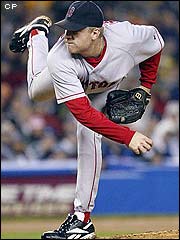 Are you studying to be a neurotheologian, but worried about your future career prospects? Now you may be able to find high-paid work as a commentator on sports figures’ religious experiences!
Are you studying to be a neurotheologian, but worried about your future career prospects? Now you may be able to find high-paid work as a commentator on sports figures’ religious experiences! I’d like to introduce Numenware readers to the
I’d like to introduce Numenware readers to the 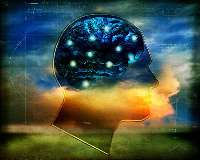 The brain is not a computer, of course. But wait. Computers are devices that process information…and that’s certainly what the brain does, right?
The brain is not a computer, of course. But wait. Computers are devices that process information…and that’s certainly what the brain does, right? A few years ago I attended a talk given by two Zen masters, one male, one female. The man, going first, retold and analyzed some ancient Chinese koan in very Zen master-like fashion. The woman, when her turn to talk came, just sat there silently for a while, then burst into tears. Regaining her composure a bit, she sobbed, “I’m just so happy that I can be here with you all. It brings my practice to life.” She went on to share with us her personal relationship with that zen community, and the frustration she felt at having only blunt, dualistic, verbal tools at her disposal to communicate her insights with us, then cried some more. Finally she flopped over and leaned into the male master sitting at her side, throwing her arms around him.
A few years ago I attended a talk given by two Zen masters, one male, one female. The man, going first, retold and analyzed some ancient Chinese koan in very Zen master-like fashion. The woman, when her turn to talk came, just sat there silently for a while, then burst into tears. Regaining her composure a bit, she sobbed, “I’m just so happy that I can be here with you all. It brings my practice to life.” She went on to share with us her personal relationship with that zen community, and the frustration she felt at having only blunt, dualistic, verbal tools at her disposal to communicate her insights with us, then cried some more. Finally she flopped over and leaned into the male master sitting at her side, throwing her arms around him. It’s just a matter of time before the brisk sales of
It’s just a matter of time before the brisk sales of 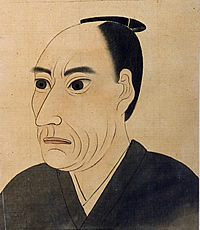 Bread is central to our Western civilization, so much so that it’s a common metaphor for spiritual nutrition. The starving Israelites wandering in the desert survived on manna from heaven. Jesus multiplied the loaves to feed the multitudes.
Bread is central to our Western civilization, so much so that it’s a common metaphor for spiritual nutrition. The starving Israelites wandering in the desert survived on manna from heaven. Jesus multiplied the loaves to feed the multitudes.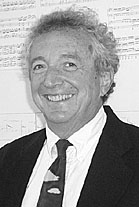 What is the relationship between music and the brain? A leading theoretician on that topic was Dr. Gordon Shaw (left), who died last month, and was most famous for discovering the so-called
What is the relationship between music and the brain? A leading theoretician on that topic was Dr. Gordon Shaw (left), who died last month, and was most famous for discovering the so-called  One high-level hypothesis that should be part of a neurotheology research plan is this: religious practices such as meditation give rise to persistent neurological changes. Although most studies to date have focused on neurological changes during meditation, research such as
One high-level hypothesis that should be part of a neurotheology research plan is this: religious practices such as meditation give rise to persistent neurological changes. Although most studies to date have focused on neurological changes during meditation, research such as 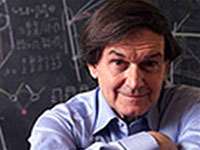 In
In